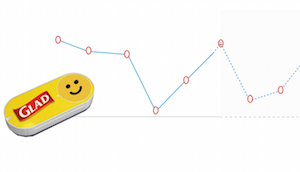 An Optimal Framework for building products which customers love.
An Optimal Framework for building products which customers love.
This site is focused on a 7 step Product Management framework to build products which customers love. We have called it the 'OPTIMAL' Framework.
1 O
Observe
This is probably the most important step in this framework. Observing your prospects and customers on a frequent basis in different settings helps with improving an existing product and coming up with innovating offerings. There are many ways you can observe a customer - for example: Listening to conversations they have with other team members, looking at support tickets and conversations they have on social media, looking at how they use your product.
Observation leads to Empathy which is the capacity to step into other people's shoes, to understand their lives.
Observation can happen through two broad ways - Active and Passive. Underneath Active, we have Naturalistic and Participatory types of observations. Underneath Passive we have Data driven observation and Post journey observation.
The following is an example of a passive data observation - Metrics around Obtaining a customer:
How to measure Lead Quality in SaaS using Google Spreadsheets only
2 P
Purpose
Every customer goes through a journey and there is a destination, purpose or goal behind that journey. Sometimes its explicit because they will let you know ahead, sometimes you need to ask questions to find out the purpose of their journey. The journeys which different customers take will be different because of their different objectives.
PerformanceYes, I squeezed this here but if you don't respond quickly enough to your customer's needs you will lose them.
At the time of writing, most of the product marketing content was written on Wordpress. Here are some performance tips:
An exhaustive list of tips to speed up WordpressHow to create a smooth scrolling high performant experience
3 T
Transparent
The key thing here is to be transparent with your customers in terms of the challenges you are facing, the roadmap and where you are in terms of delivering your commitments . We have a process on how we apply listening via different teams which gets followed through by letting our customers know what actions we took after we listened to them.
Another way I look at Transparency is to share knowledge across team members. This could be business knowledge, technical or even market knowledge. This creates a team who can respond to changes in customer's needs or market trends.
For example, if your team were using a NOSQL data store, you would identify the most looked up command by the team and make it available. This could be, for example: how to find the schema of a collection in MongoDB and publish this in your company's wiki page. Sometime's it makes total sense to publish a diagram (even if it's hand drawn) which explain's complicated things simply. An example of diagrams would be to show data types which the technical team constantly get confused about in a picture. Here is an example diagram for classifying Hadoop Data Types.
4 I
Innovation
The ideation process includes customers and employees. In the Ideation process you'll share what you've learned with your team (ie. being transparent), make sense of a vast amount of data, and identify opportunities for design. You'll generate lots of ideas, some of which you'll keep, and others which you'll discard.
Innovation is not enough. You have to amplify that with marketing. Here are some examples :
5 M
Motivate
This picture from the Fogg Behaviour Model explains what triggers to focus on so that you can have both short term and long term behaviour changes from your customers.

You don't stop with identifying triggers. You have to monitor them. Let's say your objective is to get them to buy a license on your SaaS platform. You should be able to measure that and institute a process around whether your triggers work.
Keeping track of your Marginal Decisions
6 A
Accountable
There are different aspects around product and customers. For example, keeping demand generation separate from the building of the product makes sense for us and we have team members. This is because we like to have clear accountabilities. This might not be right for a startup who has not had enough paying customers but works really well for us. We keep key customer success team members accountable for important communication around the product so that the message is more personalized.
7 L
Loveable
This goes back to a culture which supports customer centricity. Teams which involves in conversations with customers and show their love of what they do are reciprocated with love from customers. This process doesn't stop at customers and reaches every corner of the organization - support, sales, product, HR and other areas.
Creating great content which emotionally connects with your customers is also an important piece of building a relationship which lasts. Believe it or not. Even the way you choose fonts has an impact.
To measure the loveability of a product is really hard - but there is a formula for measuring product experience.